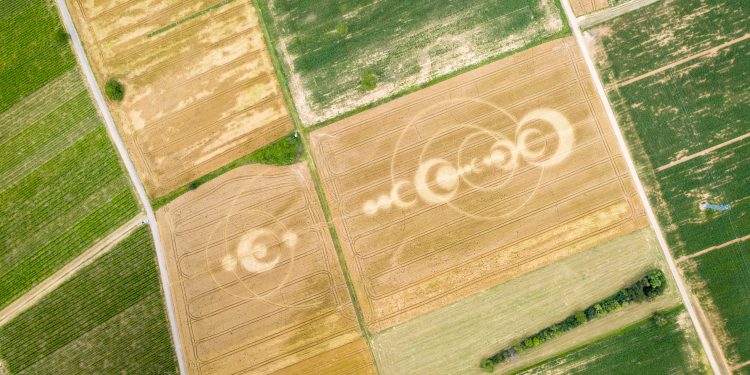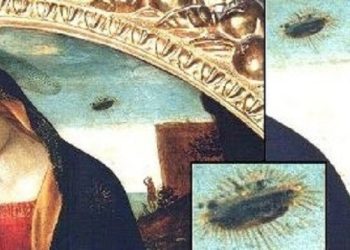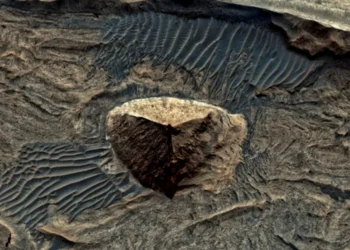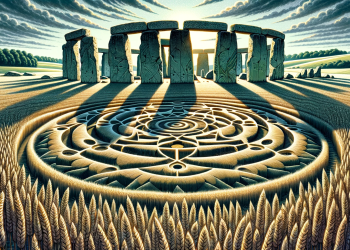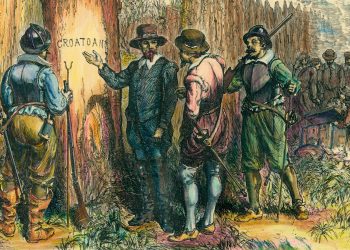The History of Crop Circles
Crop circles have been documented for centuries, with the earliest recorded instance dating back to 1678 in a pamphlet called “The Mowing Devil.” However, the phenomenon gained widespread attention in the 1970s and 1980s, when a surge in crop circle sightings sparked international curiosity and fascination. As media coverage increased, the public’s interest in crop circles grew, prompting serious investigation and research into their origins.
The Artistry Behind the Pattern
Beyond the controversy surrounding their origin, there’s no denying the remarkable artistry and intricate patterns found in crop circles. These formations often display geometric and mathematical precision, showcasing complex shapes and designs that can span several hundred feet. The intricacy and beauty of the patterns have led some to view crop circles as a form of land art, a creative expression that uses natural landscapes as its canvas.
Some crop circle artists, or “circle makers,” have come forward to claim responsibility for various formations. These individuals often work in teams, meticulously planning their designs and using simple tools such as ropes, planks, and measuring tapes to execute their creations under cover of darkness. The process of creating a crop circle can be labor-intensive and time-consuming, with larger and more complex designs taking several hours or even days to complete.
The artistic aspect of crop circles has also inspired various forms of media, including documentaries, books, and exhibitions. In some cases, artists have used the crop circle phenomenon as a starting point for creating their own unique works of art, often blending the mysterious allure of the formations with a deeper exploration of the human connection to nature and the cosmos. The artistry behind crop circles has led to a growing appreciation for the phenomenon, even among those who remain skeptical of paranormal or extraterrestrial involvement.
Furthermore, the study of crop circle patterns has led to fascinating discoveries in the fields of geometry, mathematics, and even sacred geometry. Many crop circle formations display principles of fractals, repeating patterns that occur at various scales, and demonstrate an understanding of complex mathematical concepts such as the Fibonacci sequence and the Golden Ratio. The exploration of these principles within the context of crop circle designs has sparked interest in the potential connections between art, science, and the natural world.
The Hoax Theory
One of the most widely accepted explanations for crop circles is that they are elaborate hoaxes perpetrated by humans. This theory gained traction in the early 1990s when two Englishmen, Doug Bower, and Dave Chorley, admitted to creating numerous crop circle formations in the UK using simple tools such as wooden planks, ropes, and garden rollers. Their confession and demonstrations of their techniques appeared to provide solid evidence that at least some crop circles were human-made.
Since then, various other individuals and groups have come forward claiming responsibility for creating crop circles. The emergence of crop circle-making competitions and the commercialization of crop circle art have further fueled the hoax theory. Many of these self-proclaimed crop circle artists insist that their work is a form of land art or a social experiment, designed to provoke curiosity and debate. However, not all crop circle enthusiasts are convinced by the hoax theory. They argue that while some formations are undoubtedly the work of pranksters, the sheer number, size, and complexity of certain patterns cannot be easily dismissed as mere hoaxes. They point to instances where crop circles have appeared in a matter of hours or in difficult-to-access locations, seemingly requiring significant planning, coordination, and skill to execute.
The Extraterrestrial Hypothesis
The extraterrestrial hypothesis is one of the most enduring and popular theories surrounding crop circles. This theory posits that these intricate patterns are created by alien beings as a form of communication or as markers for potential landing sites. Proponents of this theory point to the fact that many crop circles exhibit complex and precise geometrical patterns, which would be difficult for human hoaxers to create quickly, especially under the cover of darkness. Additionally, some crop circle enthusiasts argue that the presence of unusual electromagnetic readings and unexplained orbs of light observed in and around crop circle formations suggest an otherworldly origin.
In support of the extraterrestrial hypothesis, there have been reported cases of alleged UFO sightings and encounters near crop circle formations. Some witnesses have claimed to see strange lights or even spacecraft hovering above the fields where the patterns emerge. However, skeptics argue that these accounts may be embellished or misinterpreted natural phenomena, such as ball lightning or meteorological events.
There are also reports of physical traces left behind in crop circles, including bent stalks and scorched or dehydrated plants, which some researchers believe are the result of intense bursts of energy or radiation. These findings have led some to speculate that advanced technologies, beyond the capabilities of human hoaxers, are responsible for the creation of these enigmatic formations. However, no concrete evidence has been provided to conclusively link crop circles with extraterrestrial visitors, and many scientists maintain that natural or human-made explanations are more plausible.
Scientific Explanations and Debunking
In addition to the hoax theory, several scientific explanations have been proposed to account for the formation of crop circles. One such theory suggests that natural phenomena such as wind vortices or small tornados could create field patterns. In some cases, meteorological data has been found to correlate with the appearance of crop circles, lending some credence to this hypothesis. Another explanation offered by scientists is that the patterns could be caused by the interaction of electromagnetic fields in the Earth’s atmosphere. This theory posits that charged particles within these fields could interact with the plants, causing them to bend and create the observed patterns. Some researchers have even conducted experiments to replicate the effects of these fields on crops, with varying degrees of success.
Yet another scientific explanation focuses on the role of animals in creating crop circle patterns. It has been observed that certain animals, such as birds or insects, can sometimes create intricate designs on the ground as they forage for food. In some instances, these designs bear a striking resemblance to crop circles, leading some to suggest that the phenomenon could be explained by the collective behavior of these animals. Skeptics of the extraterrestrial and paranormal explanations for crop circles often point to these scientific theories as evidence that natural processes can explain the phenomenon. They argue that the lack of conclusive evidence for otherworldly involvement, combined with the known ability of humans to create crop circles using simple tools, makes it highly unlikely that the formations are the result of anything other than human activity or natural processes.
However, despite the logical appeal of scientific explanations, many crop circle enthusiasts remain unconvinced. They argue that the complexity, precision, and sheer scale of some formations cannot be adequately explained by any known natural phenomenon, leaving the door open for more mysterious explanations. As the debate continues, crop circles remain an enigmatic and captivating phenomenon that continues to capture the imagination of researchers, enthusiasts, and the general public alike.
Origins: Unexplained?
The mystery of crop circles continues to intrigue and spark debate among believers and skeptics alike. Whether they are works of art, clever hoaxes, or evidence of extraterrestrial encounters, crop circles undoubtedly capture our imaginations and challenge our understanding of the world around us and beyond. As we continue to explore this enigmatic phenomenon, we must keep an open mind and consider all possibilities. The truth may lie in a combination of explanations, or perhaps in a yet-to-be-discovered theory. Whatever the origins of crop circles, they serve as a reminder of the vast, unexplained mysteries that continue to captivate and inspire us.
PLEASE READ: Have something to add? Visit Curiosmos on Facebook. Join the discussion in our mobile Telegram group. Also, follow us on Google News. Interesting in history, mysteries, and more? Visit Ancient Library’s Telegram group and become part of an exclusive group.



